Top 15 Ways to Increase Mobile App Downloads

In 2024, the quest for app visibility and downloads has become more challenging and nuanced than ever. With an average of 1,609 apps released on the Google Play Store and 1,085 on Apple’s App Store daily, and annual downloads reaching a staggering 148.2 billion, standing out requires more than just a good idea—it demands a strategic, data-driven app marketing approach.
Today, the success of your app is not just about making it available; it’s about making it discoverable, engaging, and indispensable to users. As the digital landscape evolves, so does the importance of leveraging the latest in app store optimization, social media trends, and user experience enhancements.
In this guide, we’ll explore how to increase app downloads on the Google Play Store and App Store using 15 strategies that will propel your app beyond the 5,000-download mark that nearly 70% of apps fail to achieve. Follow these steps, and you’ll be on your way to boost your mobile app’s install rates and secure its place in the daily lives of users.
1. Prioritize App Store Optimization (ASO)
The cornerstone of a successful app lies in its listing on app stores, much like how a well-curated display window can entice passersby into a high-street store. App Store Optimization (ASO) is your key to making your app’s “display window” as inviting as possible in a saturated marketplace.
ASO refers to the process of optimizing every aspect of your app listing – from the icon, preview videos, to screenshots – to enhance visibility and rank higher in search results.
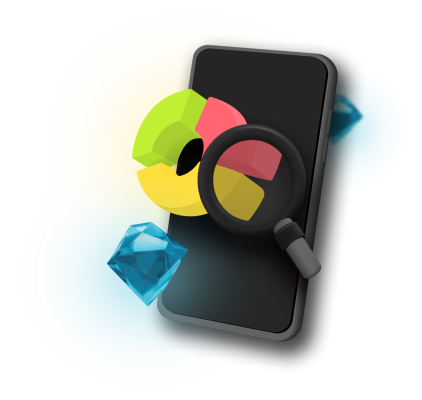
Considering that 65% of app downloads come from searches, crafting an effective ASO strategy will help highlight your app’s features through strategic keyword integration, which is crucial for increasing app installs.
While there are plenty of ASO case studies and strategies you can explore and learn from, navigating the ever-changing app store algorithms can pose a challenge. Every app store has unique ranking criteria which is crucial for enhancing app visibility. This includes ranking factors specific to the Google Play Store and the App Store.
However, to truly maximize the effects of your ASO efforts for app success, we highly recommend consulting with an expert app marketing agency like Moburst.
Want to Achieve Incredible ASO Results?
Moburst clients experience an average 32% growth in organic downloads within the first 6 months
2. Personalize & Prioritize for Your Ideal Target Users
66% of customers expect companies to understand their needs. Apps that target their target audience’s fears or concerns and offer solutions become their go-to choices in an era of decision fatigue.
To truly understand and connect with your users, it’s crucial to map out the right emotional triggers to be able to encourage them to download your app. These should be reflected in your marketing campaigns, alongside your app’s USP (unique selling proposition).

Hyper-personalized messaging and targeting is going to provide far better ROI than broad, generic campaigns.
Here are some examples of how this can be achieved:
- Dating App for Single Professionals in Their 30s: Positioning itself as the go-to for busy professionals seeking meaningful connections, this app should use targeted messaging that resonates with the challenges and desires of single 30-somethings, such as not having enough time to date, or the hassle of spending too long to find a potential match.
- Fitness App for Early Morning Joggers: Assuming this app caters to individuals who find peace and motivation in early morning runs, offering personalized workout plans and motivational content tailored to kickstart the day with energy would be a great selling point.
- Investment App for First-time Investors: With a focus on those new to investing, this app could introduce the stock market with easy-to-understand guides and personalized investment suggestions based on the user’s risk appetite and interests.
3. Localize & Internationalize Your App
Expanding your app’s reach means embracing the diversity of a global audience. App localization and internalization involve more than just translation; it’s about customizing your app’s experience to fit cultural nuances, legal requirements, and local preferences. In fact, 90% of online shoppers prefer to experience content in their native language.

This could mean adjusting your app’s layout to support right-to-left languages or incorporating local holidays into your marketing efforts. There are plenty of success stories for apps that saw download numbers soar after tailoring their content to new regions.
For instance, we helped Uber achieve a remarkable 27% growth in organic downloads in just 90 days using a comprehensive localization strategy that included key native keywords for over ten different languages.
4. Utilize Promotional Content & In-App Events
Promotional Content on the Google Play Store and In-App Events on the App Store are valuable strategies for boosting app visibility and downloads.
- On the Play Store, promotional content takes various forms, from feature graphics to promotional videos, time-limited events, and special offers. These play a crucial role in capturing users’ attention at first glance since they will appear in prime locations such as on your app’s store listing, homepage, search, and more.
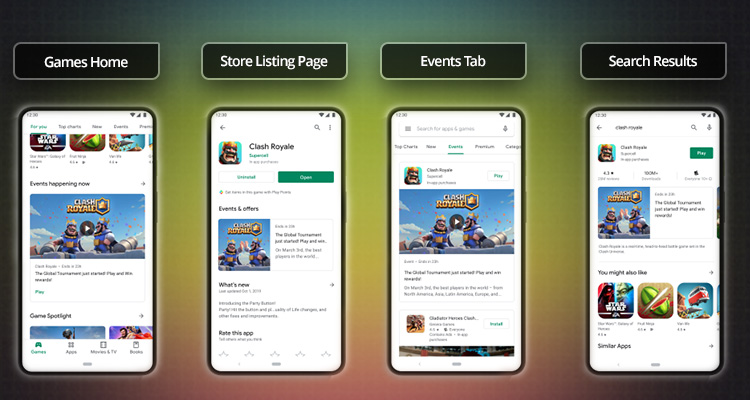
A compelling feature graphic or a captivating video can also significantly increase the likelihood of users exploring your listing further, which will encourage more app downloads.
- For the App Store, Apple introduced In-App Events in 2021, a feature that allows app owners to showcase events within their apps directly on the App Store. These could range from live events, challenges, new content launches, or major updates.
In-App Events are prominently displayed in the App Store, making it easier for potential users to discover your app through the activities you organize.
5. Refine Your Branding and Visual Identity
In 2024, user attention spans are becoming shorter than ever, with the window to capture their interest and prompt app downloads shrinking to a mere 3-6 seconds. This makes having a strong brand identity incredibly important, as it could be the difference between your app being overlooked or reaching the top 10.
Your app’s branding encompasses everything from your logo and color scheme to the tone of your messaging. It’s not just about aesthetics; it’s about creating a real connection with your potential users.
- A consistent and appealing visual identity across all platforms increases recognition and builds trust. According to a recent survey, consistent brand presentation across all platforms can increase revenue by up to 23%.
So how do you ensure your app’s branding hits the mark?
- Logo Design: Your app’s logo should be simple, memorable, and reflective of your app’s purpose. Consider the psychology of colors and shapes to convey the right emotions and values. For example, an astrology app may benefit from incorporating circle and oval shapes into its logo to signify the moon or the sun.
- Color Scheme and Typography: Choose a color palette and typography that reflects your brand’s personality and is visually appealing. These elements should be consistent across your app and all marketing materials.
- Tone of Voice: Whether your brand voice is professional, casual, or playful, ensure it is consistent in all communications. This helps in creating a personality for your brand that users can relate to.
- Branding Materials: Ensure all your branding materials (e.g., app icons, banners, app screenshots, promotional videos) are cohesive and align with your visual identity. This consistency reinforces your brand in users’ minds.
- Success Stories & Testimonials: Apps that have successfully refined their branding and visual identity have seen significant increases in user engagement and app downloads.
Are You Struggling to Connect with Your Target Audience?
Our app marketing & design experts are always available to help!
6. Build a Website (or a Blog)
Many app owners make the mistake of assuming they don’t need a full website to promote their app. But, having a great app doesn’t guarantee users will find it on app stores. In fact, many app downloads actually stem from a basic Google search.
Creating a website or a blog to showcase and promote your app can expand its reach significantly, since users may search for your brand’s keywords or related queries online rather than on the app stores.

Just like you should prioritize ASO for your app, you should also prioritize Search Engine Optimization (SEO) when launching and maintaining your website. The SEO orientation should revolve around the content on your app store page and more. Any extra information about your brand and app specifically won’t go amiss.
The keywords you should be targeting should relate to the most searched topics and queries relevant to your app’s service. In case you’re wondering, here’s a run down of the difference between ASO and SEO.
7. Elevate Your Social Media Presence
In addition to creating a great website or blog, you should also focus on establishing a prominent social media presence for your app. Leveraging social media campaigns allows you to connect with potential users where they spend a significant amount of their time.
With over 4.9 billion social media users worldwide, the potential reach is vast and varied, offering a great opportunity to increase app downloads through targeted and creative campaigns.
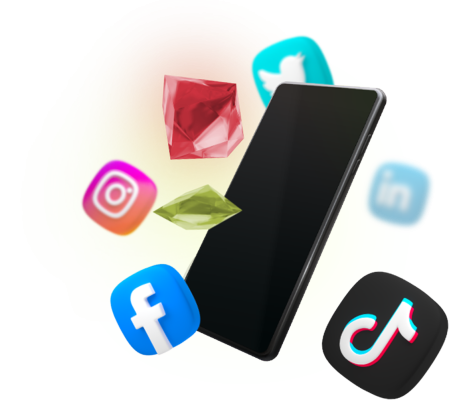
Social media campaigns also encourage direct communication with your target audience, allowing for personalized engagement that can boost app downloads.
Most platforms like Facebook, Instagram, and TikTok offer advanced targeting options, including demographics, interests, and behaviors, ensuring your app reaches the most relevant audience.
Here are some tips to help you get started with promoting your app on social media:
- Platform Selection: Choose the social media platforms where your target audience is most active. Each platform has its strengths and audience demographics, so select those that align best with your app’s niche.
- Content Strategy: Develop a social media strategy that will resonate with your target audience. This could include a mix of promotional posts, user-generated content, engaging videos, and behind-the-scenes insights into your app’s development and features.
- Paid Advertising: Take advantage of paid social media advertising for broader reach and more precise targeting. Platforms like Facebook and Instagram offer various ad formats, including stories, newsfeed ads, and in-app advertisements, that can drive significant traffic to your app store page.
- Engagement: Foster engagement by responding to comments, messages, and mentions. Social listening tools can help you monitor conversations about your app, allowing you to engage in relevant discussions and manage your brand’s online reputation.
8. Collaborate with Influencers & UGC Creators
Influencer marketing and User-Generated Content (UGC) have become essential tools in every marketing campaign as they contribute to your brand’s authenticity and credibility, paving the way for enhanced engagement and brand loyalty.
Leveraging the trio of influencers, UGC creators, and organic UGC is a potent strategy for boosting app downloads. Here’s how you can implement it:
Influencers
Partner with influencers for targeted exposure. Choose influencers whose audience aligns with your app’s target demographic. A practical step here is to have influencers create content that highlights the unique features of your app, such as walkthroughs, reviews, or how-tos, and share these on their platforms.
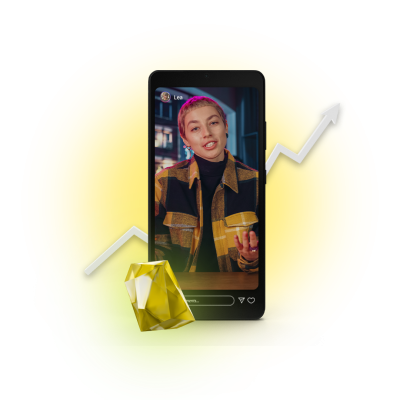
UGC Creators
Collaborate with UGC creators to produce custom content for your app listing and online brand. Unlike influencers, this content should be used directly within your app or on its listing page to show potential users the app in action.
Think of it as hiring a creator to make a testimonial or demo video that you can showcase in your app store listing or within the app itself as a tutorial. This kind of content is perceived as more authentic than traditional advertisements and can drive a lot of engagement to your app.
You can find plenty of UGC creators via dedicated marketplaces such as Moburst’s vast Creator Network, where we feature talented creators from every single industry and niche.
Organic UGC
As the name suggests, organic UGC refers to social media posts, reviews and ratings that users post regarding their thoughts or experiences with your app.
Organic UGC not only serves as social proof but also contributes to your app’s SEO and visibility. It’s one of the most valuable tokens of app success, as these are the types of posts users will actively search for and encounter when deciding whether to engage with your app.
So, make sure you’re encouraging your current users to share their genuine experiences with your app. This can be facilitated through in-app prompts after achieving certain milestones, competitions where users share content under a specific hashtag, or simply by providing an exceptional user experience that users will want to talk about.
Example Strategy
Let’s say you own a fitness app. To promote more app downloads, you could collaborate with a fitness influencer to create a series of workout videos exclusively using the app’s routines, shared on the influencer’s social media channels.
Simultaneously, hire a UGC creator to develop testimonial videos showcasing real weight loss journeys with the app, which can be featured on the app store page.
Finally, encourage organic UGC by introducing a feature within the app that allows users to share their workout achievements or before/after photos directly from the app to their social media, incentivizing this action with app credits or features.
9. Encourage Ratings and Reviews
Don’t overlook the power of ratings and customer reviews in boosting app downloads. The user experience is a pivotal factor in the success of a mobile app.
- Ratings and reviews significantly influence the public perception of your app and can provide you with insights on how to improve it.
These ratings and reviews, emerging directly from user experiences, also act as a form of organic UGC, enriching the narrative shaped by influencer campaigns and user-generated content to improve your app’s credibility and visibility.
- They not only affirm the quality and reliability of your app but also play a key role in improving its ranking within app store search results. Given that higher visibility in app stores directly correlates with increased downloads, it’s crucial to actively encourage users to share their feedback.
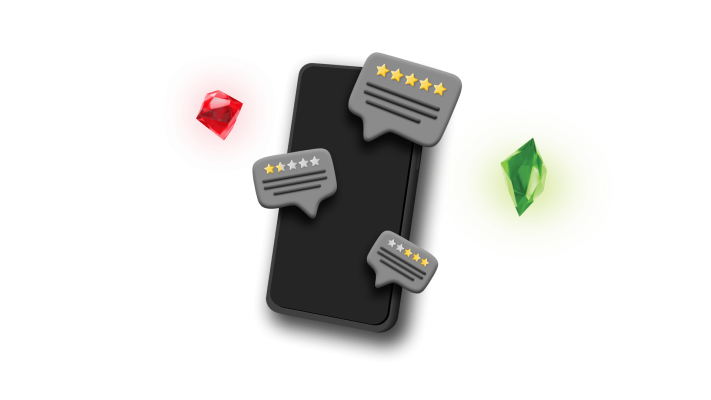
To effectively gather this user feedback, consider a strategy that requests ratings and reviews at optimal moments—such as after a user has achieved a milestone or experienced a particularly satisfying moment within the app.
This can be achieved through subtle prompts that don’t disrupt the user experience but rather integrate smoothly into it.
- Additionally, engaging with the feedback received by thanking users for positive reviews and addressing any concerns raised in negative ones demonstrates your commitment to user satisfaction. It also shows dedication to continuous improvement, acting as a selling point for potential users.
10. Launch a Referral Program
Referral programs operate on the principle of mutual benefit. By offering rewards for both the referrer and the referee, such as in-app currency, premium features for a limited time, or exclusive content, you not only encourage your current user base to promote your app but also make the proposition enticing for new users to join and download it.
- The key to a successful referral program is simplicity and visibility. Ensure the referral process is straightforward and that the rewards are clearly communicated. This could be promoted through easy sharing options within the app interface and regular reminders or prompts that encourage users to participate.
In addition to driving downloads, a referral program can significantly enhance user engagement and loyalty. When users are rewarded for sharing an app they enjoy, it reinforces their positive feelings towards the app and builds a community of engaged users who are more likely to be active and contribute to the app’s ecosystem.
11. Adjust Your App Pricing Strategy
If you feel that your app’s current pricing strategy isn’t working out as expected, it might be worth mixing it up.
The right pricing model not only makes your app attractive to potential users but also ensures a steady revenue stream. Choosing and occasionally revising your app monetization strategy can align your value proposition with user expectations and market demands.
- The freemium model, offering a basic version of your app for free while charging for premium features, is a popular strategy that lowers the barrier for initial download. This model can entice users to try your app without financial commitment, providing an opportunity to showcase the value of your premium offerings.
However, the challenge lies in striking the right balance between providing enough value in the free version to keep users engaged while reserving premium features that are compelling enough to warrant a purchase.

- Another approach is the subscription model, which is becoming increasingly popular in recent years. This model provides users with access to content or services for a recurring fee.
It’s particularly effective for apps that offer ongoing value, such as productivity tools, news platforms, or entertainment content. The key to success with a subscription model is ensuring that the content or service remains fresh and valuable over time, encouraging users to continue their subscription.
Seasonal promotions and limited-time offers such as the ones we discussed above can also play a significant role in adjusting your pricing strategy. These can attract new users and re-engage lapsed ones by offering your app or its premium features at a discounted rate for a short period.
Whatever pricing model you choose, transparency is crucial. Users should clearly understand what they are getting for their money and how the pricing structure works.
- Additionally, continually analyzing your app’s performance and user feedback regarding pricing can provide insights into whether it’s time to adjust your strategy. This could mean changing your prices, the features included in different tiers, or even the pricing model itself.
Need Help Building the Perfect App Pricing Strategy?
Our app marketing experts are always available to help!
12. Embrace Email Marketing
Email marketing, when executed thoughtfully, can be a powerful channel to increase app installs. By building a targeted email list and engaging potential users with compelling, customized content, you can promote your app while building a relationship with future users.
Email marketing campaigns for apps do two things particularly well:
- Increase your subscriber list before launching an app for a boost in installs
- Inform and remind potential users about new updates and offers inside your app
If you have yet to launch your app, make sure to create a landing page and start building your email address database. Provide your audience with the right info, and create hype by offering them something they can get excited about.

If you want to encourage even more sign-ups, a strategic approach can be leveraging your existing online presence, such as your app’s website or social media platforms.
- This can be achieved by offering value in exchange for their email address; think along the lines of exclusive content, early access to features, or entry into a giveaway.
- Once you’ve captured their interest and they’ve opted into your emails, you have a direct line to showcase your app’s benefits, updates, and user testimonials that highlight its value.
People will gladly give out their email addresses if you can hype the benefits of your app and promise them value.
Pro Tip: If you’re going to use emails in your app marketing campaigns, make sure that all of your emails are mobile optimized and tailored to the user’s OS and mobile devices. That’s where most people access their emails these days, especially when they’re not work related.
Check out our full guide to email marketing for apps to learn more.
13. Invest in Media Outreach
Investing in media outreach is a more traditional strategy for amplifying your app’s visibility and driving downloads – but it’s definitely one worth trying.
This approach involves reaching out to journalists, bloggers, and influencers in specific niches relevant to your app, to secure coverage that can promote your app among potential users.
To get started, we recommend crafting a compelling press release that highlights what makes your app unique, its benefits, and any testimonials or success stories.
- Make sure your press release answers the why: why your app matters, why it’s better than competitors, and why readers should care.

Building a media list is also crucial. Identify publications and platforms where your target audience consumes content, and reach out to the journalists and content creators who cover topics relevant to your app.
- Personalized pitches are more effective than mass emails, so take the time to understand the work of the person you’re contacting and tailor your pitch accordingly.
In addition to traditional media outlets, consider niche blogs, podcasts, and YouTube channels that align with your app’s target demographic. These channels often have highly engaged audiences and can be more approachable for emerging apps.
- Don’t underestimate the power of local media, especially if your app has a local element or you’re based in a smaller community. Local news outlets are always looking for interesting stories and may be more receptive to featuring local entrepreneurs and startups.
Remember, the goal of media outreach is not just to get any coverage, but to secure meaningful visibility that can lead to app downloads. Measure the success of your efforts by tracking how media mentions correlate with spikes in app downloads and adjust your strategy as needed.
- Finally, ensure your app and its website are media-ready, with a press kit that includes high-resolution images, a detailed app description, and contact information for further inquiries. This prepares you to respond swiftly and effectively when media interest arises, maximizing the opportunity for exposure.
14. Experiment with Affiliate Marketing
Affiliate marketing offers a performance-based avenue to increase app downloads, leveraging partnerships to spread the word about your app. This strategy involves collaborating with affiliates—bloggers, influencers, and other content creators—who promote your app to their audience in exchange for a commission on the downloads or in-app purchases they drive.
- To kickstart your affiliate marketing efforts, identify potential partners who align with your app’s niche and values. These affiliates should have a strong connection with your target audience, ensuring that their recommendations are trusted and acted upon.
Platforms and networks specializing in affiliate marketing can help match you with suitable affiliates, simplifying the process of finding and managing partnerships.
Setting clear terms and conditions is really important for a successful affiliate marketing campaign. Define the commission structure, payment terms, and any specific requirements regarding how your app should be presented.
Providing your affiliates with unique tracking codes is essential for accurately monitoring the performance of each partner and attributing downloads correctly.
Creating compelling promotional material for your affiliates is also vital. This can include banners, social media posts, and ready-to-use content that makes promoting your app as easy as possible for them. The easier you make it for affiliates to share your app, the more likely they are to do so.
- If you want to truly maximize the impact of your affiliate marketing, consider combining it with some of the other promotional activities we mentioned, such as social media campaigns or email marketing, to create a marketing push that can significantly boost your app’s visibility and downloads.
15. Monitor, Optimize, and Repeat
As with all things marketing, app marketing is dynamic, with the effectiveness of strategies evolving as user behaviors and technology change. Therefore, our final and ongoing strategy to increase app downloads is going to be to monitor, optimize, and repeat successful tactics. This approach not only ensures the continuous improvement of your marketing efforts but also maximizes return on investment (ROI) and boosts app downloads over time.
Implementing the strategies discussed—from prioritizing app store optimization (ASO) and leveraging promotional content, to embracing email marketing and investing in media outreach—sets the foundation for a robust app marketing plan.

For example, analyzing the impact of your ASO efforts might reveal specific keywords that drive more downloads, or you might find that certain types of email content result in higher engagement rates. Similarly, by measuring the ROI of your affiliate marketing campaigns or the reach of your media outreach efforts, you can identify which partnerships and platforms are most beneficial for your app.
Armed with this data, you can optimize your strategies by doubling down on what works and reevaluating or discontinuing tactics that don’t deliver the desired results. This might involve refining your app’s messaging, experimenting with different promotional offers, or shifting focus to more effective marketing channels.
Key Takeaways
In conclusion, the journey to increasing app downloads is iterative. By adopting the strategies outlined in this article, you can create a dynamic marketing approach that evolves with your app and its users. This not only drives downloads but also builds a strong, loyal user base for your app’s long-term success.
As a full-service app marketing agency, we at Moburst understand the nuances and challenges of app marketing. Our expertise and data-driven approach have propelled apps from obscurity to the top of their categories, achieving millions of downloads and exponential growth.
Whether you’re launching a new app or looking to boost the performance of an existing one, we can offer the strategic insight and execution excellence needed to succeed in today’s competitive market.
Ready to Experience Mobile Hypergrowth?
Our team of app marketing experts is here to help!






